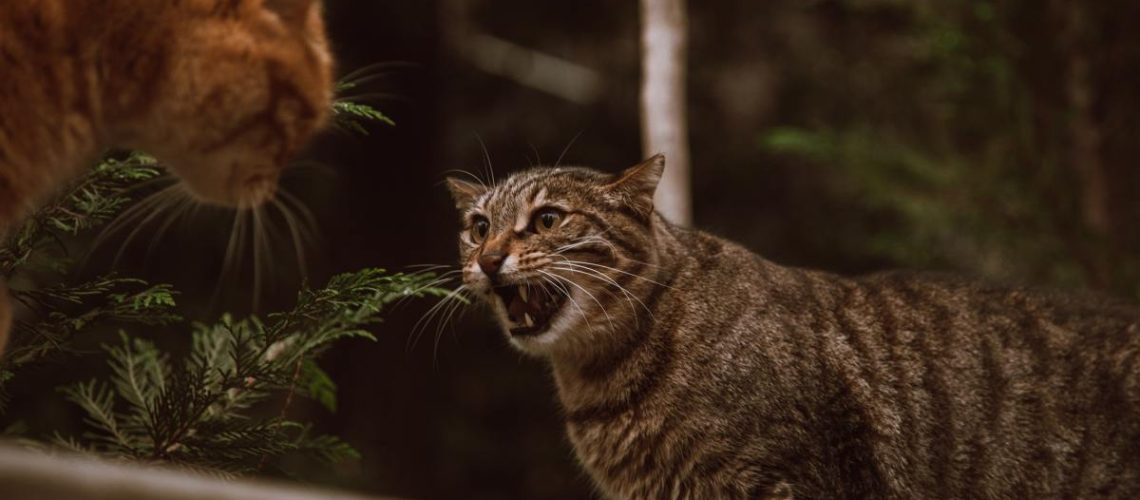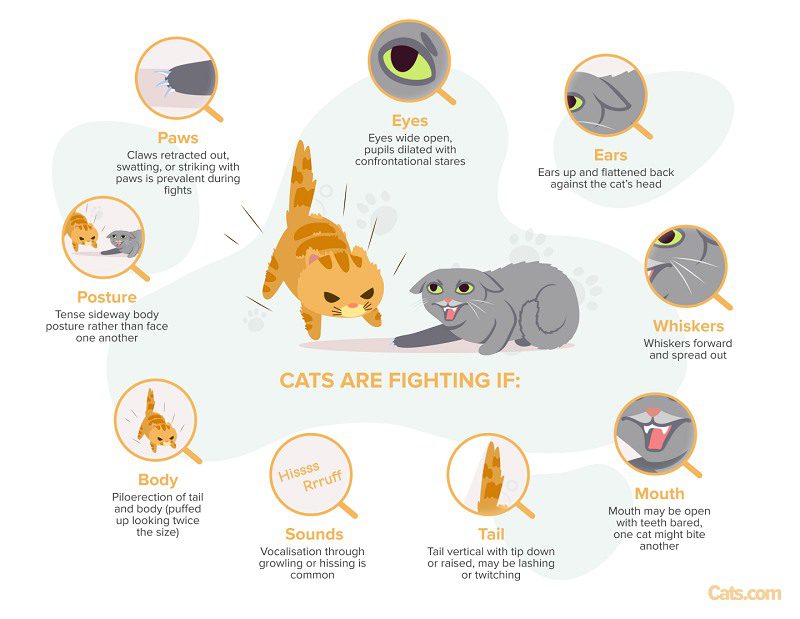Are you tired of the constant chaos and commotion caused by your cats fighting at home? Imagine a peaceful household where your feline friends coexist harmoniously, without any squabbles or hissy fits. Well, you're in luck! In this article, we will explore the art of peace talks for cats, and how understanding their behavior can bring tranquility to your home. By delving into this subject, you will unlock the secrets to resolving cat conflicts and create a serene environment that benefits both you and your furry companions. So, let's embark on this journey towards a harmonious home filled with purrs and contentment!
Key Takeaways:
- Establishing a peaceful environment at home requires understanding the underlying causes of cat squabbles.
- Providing each cat with their own space and resources can prevent territorial disputes.
- Introducing new cats gradually and using positive reinforcement can help reduce conflicts between feline housemates.
- Regular playtime and mental stimulation can redirect aggressive behavior and promote harmony among cats.
- Seeking professional help, such as consulting a veterinarian or animal behaviorist, can provide valuable guidance in resolving cat squabbles at home.
The Importance of Resolving Cat Squabbles at Home
Resolving cat squabbles at home is crucial for maintaining a peaceful and harmonious environment for both your cats and yourself. When cats constantly fight or display aggressive behavior towards each other, it can lead to stress, anxiety, and even physical harm. As a responsible pet owner, it is essential to address these conflicts promptly to ensure the well-being of your furry companions.
Not only do cat squabbles disrupt the overall peace in your household, but they can also result in costly veterinary bills if one or both cats get injured during a fight. Additionally, unresolved conflicts can strain the bond between you and your cats, making it difficult to build trust and create a loving relationship. By taking proactive steps to resolve cat squabbles, you can foster a calm and happy atmosphere where all members of your family, including your feline friends, can thrive.
The Consequences of Ignoring Cat Squabbles
If left unaddressed, cat squabbles can escalate into more serious fights that may cause severe injuries or infections. Cats have sharp claws and teeth that they use as weapons when they feel threatened or challenged by another cat. These fights can result in deep wounds that require medical attention and treatment with antibiotics.
Moreover, ongoing conflicts between cats can lead to long-term behavioral issues such as increased aggression, fearfulness, or territorial marking. These behaviors not only affect the well-being of the cats involved but also create an unpleasant living environment for everyone in the household.
Tips for Identifying Cat Squabbles
- Listen for hissing sounds: Cats often hiss when they are feeling threatened or angry towards another cat.
- Watch out for aggressive body language: Cats may puff up their fur, arch their backs, or flatten their ears when they are ready to fight.
- Pay attention to excessive hiding or avoidance behavior: If one of your cats is constantly hiding or avoiding certain areas of the house, it could be a sign of conflict with another cat.
- Look for physical injuries: Scratches, bite marks, or scabs on your cats' bodies are clear indications that there have been fights between them.
The Importance of Resolving Cat Squabbles at Home
Resolving cat squabbles at home is crucial for maintaining a peaceful and harmonious environment for both your cats and yourself. Cats are territorial animals, and conflicts between them can lead to stress, anxiety, and even physical injuries. As a responsible pet owner, it is essential to address these squabbles promptly to ensure the well-being of your feline companions.
To resolve cat squabbles, it is important to understand that each cat has its own unique personality and needs. Some cats may be more dominant or territorial than others, while some may be more submissive. By recognizing and respecting these individual traits, you can create an environment that minimizes potential conflicts.
Why Resolving Cat Squabbles Matters
Resolving cat squabbles not only promotes a peaceful coexistence among your pets but also helps maintain their overall health. Constant fighting can lead to physical injuries such as scratches or bites, which may require medical attention. Additionally, ongoing conflict can cause stress-related health issues like urinary problems or decreased appetite.
The Impact on Your Household
Unresolved cat squabbles can also have a negative impact on your household dynamics. The constant tension and noise from fights can disrupt the peace in your home and create an uncomfortable living environment for everyone involved. By addressing these conflicts proactively, you can restore harmony within your household.
Recognizing Signs of Conflict Between Cats
In order to effectively prevent cat fights, it is crucial to recognize the signs of conflict between cats early on. Cats communicate through various body language cues that indicate their emotional state and intentions towards other cats. By understanding these signals, you can intervene before a full-blown fight occurs.
Some common signs of conflict between cats include hissing, growling, raised fur, flattened ears, and a tense body posture. These behaviors indicate that the cats are feeling threatened or agitated. It is important to pay attention to these signals and take immediate action to prevent escalation.
Body Language Cues
Cats use their body language to communicate their intentions and emotions. For example, an arched back with fur standing on end indicates aggression or fear. On the other hand, a relaxed and loose body posture signifies contentment and comfort.
Vocalizations
Cats also use vocalizations as a means of communication. Growls, hisses, or yowls are warning signs that a cat is feeling threatened or defensive. Understanding these vocal cues can help you intervene before a fight breaks out.
Effective Strategies for Preventing Cat Fights
Preventing cat fights requires a proactive approach that focuses on creating a peaceful environment and addressing potential triggers. By implementing effective strategies, you can significantly reduce the likelihood of conflicts between your cats.
One strategy is to provide each cat with its own separate space where they can retreat when they need some alone time. This could be in the form of individual cat trees, hiding spots, or designated rooms where they can feel safe and secure.
Introducing Cats Slowly
If you are introducing a new cat into your household, it is crucial to do so gradually. This allows the cats to become familiar with each other's scents and presence without feeling threatened. Gradual introductions can help prevent territorial disputes and reduce the chances of aggressive behavior.
Promoting Positive Associations
Creating positive associations between your cats can also help prevent fights. This can be done by providing treats or rewards when they are calm and relaxed in each other's presence. Positive reinforcement can help build trust and reduce tension between your cats.
Creating a Peaceful Environment for Your Cats at Home
A peaceful environment is essential for maintaining harmony among your cats. By creating an environment that meets their physical, emotional, and social needs, you can minimize the likelihood of conflicts.
Ensure that your cats have access to plenty of resources such as food bowls, water sources, litter boxes, scratching posts, and toys. Having enough resources reduces competition and potential triggers for fights.
Vertical Space
Cats are natural climbers, so providing vertical space such as cat trees or shelves allows them to establish territories without encroaching on each other's personal space. Vertical space also provides opportunities for exercise and mental stimulation.
Scent Management
Cats rely heavily on their sense of smell to communicate. To create a peaceful environment, it is important to manage scents effectively. This can be done by regularly cleaning litter boxes, using pheromone diffusers to promote relaxation, and providing separate bedding areas for each cat.
Common Reasons Behind Cat Squabbles
Understanding the common reasons behind cat squabbles can help you address the root causes and prevent conflicts from arising in the first place. Cats may engage in fights due to various factors such as territorial disputes, resource guarding, fear or anxiety, or social hierarchy issues.
Territorial disputes occur when cats feel that their territory is being invaded by another cat. This can lead to aggressive behavior as they try to defend their space. Resource guarding occurs when cats become possessive over food, toys, or other valuable items. Fear or anxiety can trigger defensive behaviors in cats, leading to conflicts.
Social Hierarchy
Cats are naturally hierarchical animals, and conflicts can arise when they try to establish their position within a social group. This is especially common when introducing a new cat into an existing household. Understanding these dynamics can help you manage the introduction process more effectively.
Preventing Common Triggers
By identifying and addressing these common triggers, such as providing separate resources for each cat or implementing gradual introductions, you can minimize the likelihood of cat squabbles occurring in your home.
Examples of Successful Peace Talks Between Cats
While resolving cat squabbles may seem challenging, there are numerous success stories where cats have learned to coexist peacefully. These examples demonstrate that with patience, understanding, and proper intervention, cats can overcome their differences and form positive relationships.
In one example, two cats who initially displayed aggressive behavior towards each other were successfully integrated through gradual introductions and positive reinforcement. By rewarding calm behavior and providing separate spaces for each cat initially, they gradually developed trust and formed a bond over time.
The Power of Play
In another example, two cats who frequently engaged in fights were able to redirect their aggression through interactive play sessions. By engaging them in play activities together using toys or laser pointers, their energy was channeled positively, reducing the likelihood of conflicts.
Professional Intervention
In some cases where conflicts persist despite efforts at home, seeking professional help from a veterinarian or animal behaviorist can provide valuable guidance. These experts can assess the situation objectively and provide tailored strategies to resolve the conflicts between your cats.
In conclusion, by understanding the reasons behind cat squabbles and implementing strategies like providing separate spaces and toys, we can create a peaceful environment for our furry friends at home. With patience and love, we can help them coexist harmoniously and enjoy a happy life together.
How do I stop my cats from fighting at home?
To handle territorial, cat-to-cat, and aggression caused by status, it is important to provide each cat with their own designated area and sufficient resources. This includes having multiple cat trees, plenty of toys and attention, separate food and water sources, and litter boxes placed far apart to prevent conflicts.
Why are my cats fighting in the house?
Because cats are territorial animals, they naturally feel the need to protect the areas where they have everything they need to survive. This includes your home and specific locations within it, such as entryways, feeding areas, sleeping spots, play areas, scratching posts, hiding places, and litter boxes.
How do you break up two cats fighting?
When attempting to break up a cat fight, it is important to remain at a safe distance from the altercation. You can try clapping your hands loudly and shouting, throwing toys in the direction of the cats, using a water spray bottle to disrupt them, or shaking a can partially filled with coins to deter them.
Is it normal for cats to squabble?
Just because your cats occasionally argue doesn't mean they hate each other. A recent study discovered that kittens engage in more playful wrestling compared to adult cats. Any household with multiple cats is familiar with the fact that occasional disagreements or fights between them are inevitable.
Should I let my cats fight a little?
If one cat is attempting to escape, particularly if it sneaks away to find a hiding spot, it would be unwise to allow it to continue. However, if both cats are actively participating in chasing, wrestling, pouncing, or other interactive behaviors without either one displaying signs of distress or anxiety, then it is acceptable to let them continue.
How do I get my cat to stop attacking my other cat?
To prevent conflicts between cats, it is recommended to have toys and treats in each room of the house to keep them distracted. When cats stare at each other, it often leads to fights, so it's important to keep their minds and bodies occupied with wand toys and treats when they are together.

















